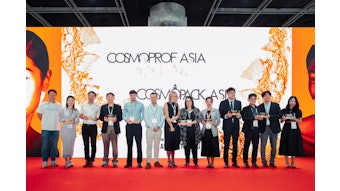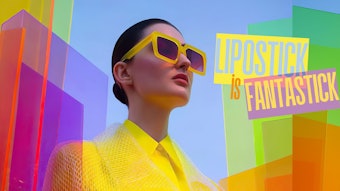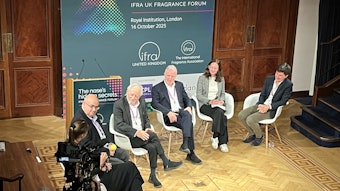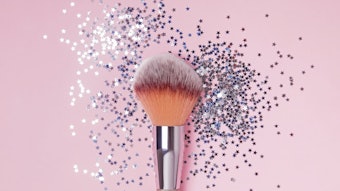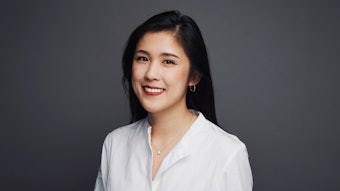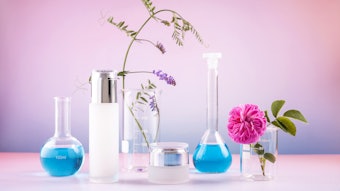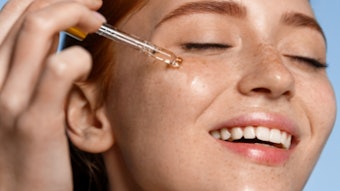Day 2 of IFSCC 2022 London opened with a keynote featuring the "fastest neuroscience lecture ever," as the presenter described it. Presentations on neuroscience, sensory science, omics and instrumentation were headlined under the theme "Science of our Time." Talks highlighted approaches to measure emotional response to products, reduce stress and influence emotions, characterize textural properties and establish predictive models; and even crossed paths into the auditory realm.
See archived: Objective Emotional Assessment of Perceivable Wellness Effects
Brain-skin Connection and the 'Fastest Neuroscience Lecture Ever'
Baroness Susan Greenfield, of NeuroBio, opened with a keynote lecture describing connections between the skin and brain. Her work is currently focused on the skin as a biomarker for Alzheimer's. She started off with a quick review of neuroscience, calling it the "fastest neuroscience lecture ever."
See archived: How Cosmetics R&D Should Be Using Neuroscience
"The brain moves from sensory experiences to cognitive connections," said Greenfield, who described how a child might view a gold wedding ring as just that; eventually associating it with marriage and even knowing what finger to wear it on. "With Alzheimer’s, the cognitive [component] is slowly dismantled, putting [a person back at] the mercy of their senses."
She added that dopamine release in children is higher since their response to stimuli is more sensorial. In adults, this release is more moderate. "At NeuroBio, our approach is to identify certain brain cells with different problems that give rise to dopamine release," she said.
Cells in both the brain and skin have many more things in common than one might think, according to Greenfield. For example, studies have found that pathological skin suggests greater potential central nervous system aging, and patients with dementia demonstrate abnormalities in fibroblast biology.
In relation, according to Greenfield, neurodegeneration is "an aberrant triggering" of a formerly developmental process that is triggered by the molecule T14. And, since epidermal keratinocytes are in a constant state of renewal, her team looked the signaling of T14 in skin as a biomarker of Alzheimer's. Recent work with Unilever revealed a connection: "T14 in skin reflects age and aging," she said, additionally emphasizing the "two-way street" between the brain and skin.
Mind Reading, Stress and Scent, Sound of Freshness
Emotion prediction: Gusang Kwon, of AmorePacific, presented on "neuroscience to read your mind." He described an algorithm developed based on the assessments of valence, arousal and preference in 100 healthy adults that could predict a consumer's emotions in real time to create a bath bomb specific to them. He concluded the described approach helps to understand consumer behavior in a novel way, and that it has multiple implications for the cosmetic industry. "As the demand and research for personalized cosmetics continue to grow, further research will play an important role in providing tailored solutions."
Skin stress and mechanoreceptors: Reinhold Dauskardt, of Stanford University, presented research conducted with L'Oreal R&I to engineer cosmetics to combat skin stress; or as he explained, to connect sensory perception to topical formulations. He described an approach to compute the strain state of mechanoreceptors in skin to devise a firing rate model to predict sensory effects/strains/conditions, e.g., dryness from cleansing, or moisturization.
See archived: [podcast] Missed Cues Present Future Sensory Potential
"With more firing you feel tautness [such as from cleansers] and with less, you feel comfort [such as from moisturizers," he explained. "Moisturizers can enhance skin comfort and this can be computed in terms of mechanoreceptor firing." Dauskardt added that this can be determined for different body locations, such as the cheek, forehead, abdominal area, etc., with strong correlation.
Scent and COVID-29 masks: Celine Carrasco-Douroux, of Symrise, described work examining the effects of scent in face masks. Her team measured facial expressions, and used eye tracking and questionnaires in response to fragrance applied to COVID masks. The fragrance incorporating tonka bean, vanilla and ginger was used for 15 days by 78 subjects ranging from 20 to 66 years in age, and including 45 women and 33 men.
"Results showed it provides a sense of well-being and energy, reduces stress and makes masks more bearable," she said. During the Q&A session, one attendee noted the effects of different scents could vary with cultures and regions. She also asked whether any fragrance could have these effects, or just these; or even if fragrance alone without the mask has any effects. Carrasco-Douroux agreed that fragrance alone is know to have relaxing effects.
Another attendee wondered whether the work examined nose-blindness or olfactory fatigue." We didn’t test to see if they didn’t detect it after a longer time but we saw that if they reapplied it, they were able to reactivate [sensory responses]," said Carrasco-Douroux.
EEG to connect emotion and fragrance: Hugo Ferreira, of the University of Lisbon, presented on EEG-based "functional connectivity and physiological correlates of emotion in fragrance exposure." His goal was essentially to understand how the sense of smell works and try to correlate that with emotion for better product experience.
He noted how the sense of smell differs from other senses, "You can’t voluntarily evoke the sense of smell like you can an image or sound of a loved one," he said. "That's because of the way sense of smell is organized and how the olfactory network processes the scent."
Ferreira noted his work was a first pilot study of neural correlates of emotional responses to fragrances; particularly: lavender, horse sweat, lemon, kerosene, vanilla, cedar and vinegar. He concluded a larger sample is needed, as well as correlations with additional physiological responses. The end goal of the work is to build a database and predict customer response to improve cosmetic product success.
Sounds of freshness: Monique Alves Frazon Cantu, of Grupo Boticario, explored the effects of sound to enhance the olfactory sense of freshness. Part one of this research was conducted online with 264 Colombian subjects and used fresh, floral, fruity and citrus notes; spicy, woody and spice notes and sweet notes. Sensations relevant to freshness ranged from hot-cold, dry-humid, urban outdoor, unpleasant-pleasant, uncomfortable-comfortable, sweaty-cool, energetic-calmed and powdery-smooth (bipolar scale). Part two included 376 subjects who evaluated only one stimulus.
Results indicated that woodwind instruments and the piano, with low tempo and legato articulation, triggered a sense of humidity, outdoors, lightness, smoothness, coolness, calmness, freshness and fruitiness. “This multisensory approach generates more connection and engagement with consumers,” she said, pointing to a “new era” of fragrance sensations in the consumer journey. However, she added, "We have just scratched the surface."
Attractiveness in a New Light
Finally, Ryo Kakimoto, of KOSÉ Corp., revealed the discovery of "global common denominators of skin reflectance" that enhance the impression of attractiveness in consumers. According to Kakimoto, under the old model, makeup was used to conceal imperfections but in this new era, it is used to "enhance the desired impression" of the wearer.
The described work evaluated whether specific impressions of elegant, clear, bright, warm, lively and healthy could be enhanced with changes in spectral reflection, e.g., turning up the violet, blue, orange, red, and blue + red wavelengths. Measurements were carried out in a multi-wavelength observation room to accurately and conveniently control the lighting on participants.
Forty-four participants falling into six global skin tone categories were enrolled and evaluated under different lighting by 10 trained experts. Results indicated that turning up violet and blue wavelengths gave impressions of "elegant, clear and bright." Increases in red and orange gave impressions of "lively, healthy and (especially) warm." This, according to Kakimoto, related to an impression of ruddiness in skin. Blue and red together increased all six impressions but especially "lively and healthy."
From these findings, tailor-made liquid foundations were created with different balances of TiO2, iron oxide, Red 30 and Blue 1 lake, to provide the wearer with these various impressions. "We believe our discovery can help individuals express themselves," said Kakimoto.
Additional talks under the neuroscience umbrella included:
- Pedro Contreiras Pinto, of PhDTrials, on the skin as a recipient of environmental influences for the emotional state; here, he presented the new concept of the emossome—the environment space that surrounds skin and influences the sensorial response by inducing a perceived neural activity;
- Sébastien Cadau, of BASF Beauty Care Solutions, on 3D-innervated epidermis grown on microfluidic chip;
- Annalisa Tito, of Arterra Bioscience, on a 3D skin and plant model to effectively monitor Piezo1 and Piezo2 driven mechano-transduction;
- Prof. Charles Spence, of the University of Oxford, who gave a keynote on neuroscience-inspired multisensory design in the cosmetics sector;
- Jun Dong Park, of Sookmyung Women’s University, on establishing a predictive model for the spreadability of cosmetic formulations by Large Amplitude Oscillatory Shear (LAOS) and machine learning;
- Karine Desseille, of Croda, on bridging the consumer and technical sensory perspective on the characterization of skin care products;
- Juliette Rengot, of Newtone Technologies, on a digital photographic grading tool for online visual skin evaluation on images;
- Charlotte Dallay, of the Université Le Havre Normandie, on the formulation of lamellar phases using a natural surfactant to understand the effects of fragrance on cosmetic emulsions: from microstructure to sensory perception;
- Harshita Kumari, of the University of Cincinnati, on the impact of model 7-perfume molecule accord on the self-assembly of branched mixed-surfactant system as a function of dilution and dipropylene glycol: A neutron scattering study; and
- Marie Jaricot, also of the Université Le Havre Normandie, toward odorless cosmetic ingredients: determination of fatty esters odor origin.
Concurrent Sessions: Omics and Instrumentation
As noted, concurrent sessions featured studies of omics technologies in action and instrumentation measurement and meaning. For more on these presentations, see the full conference program for day two, Hall 2. Notably, attendees were inspired by, among others, Prof. Mark Birch-Machin, of Newcastle University, who presented on bioenergy, stressed out skin and what the industry can do to help. Follow along with us as we report on the third and final day of IFSCC—including the gala and awards dinner.
